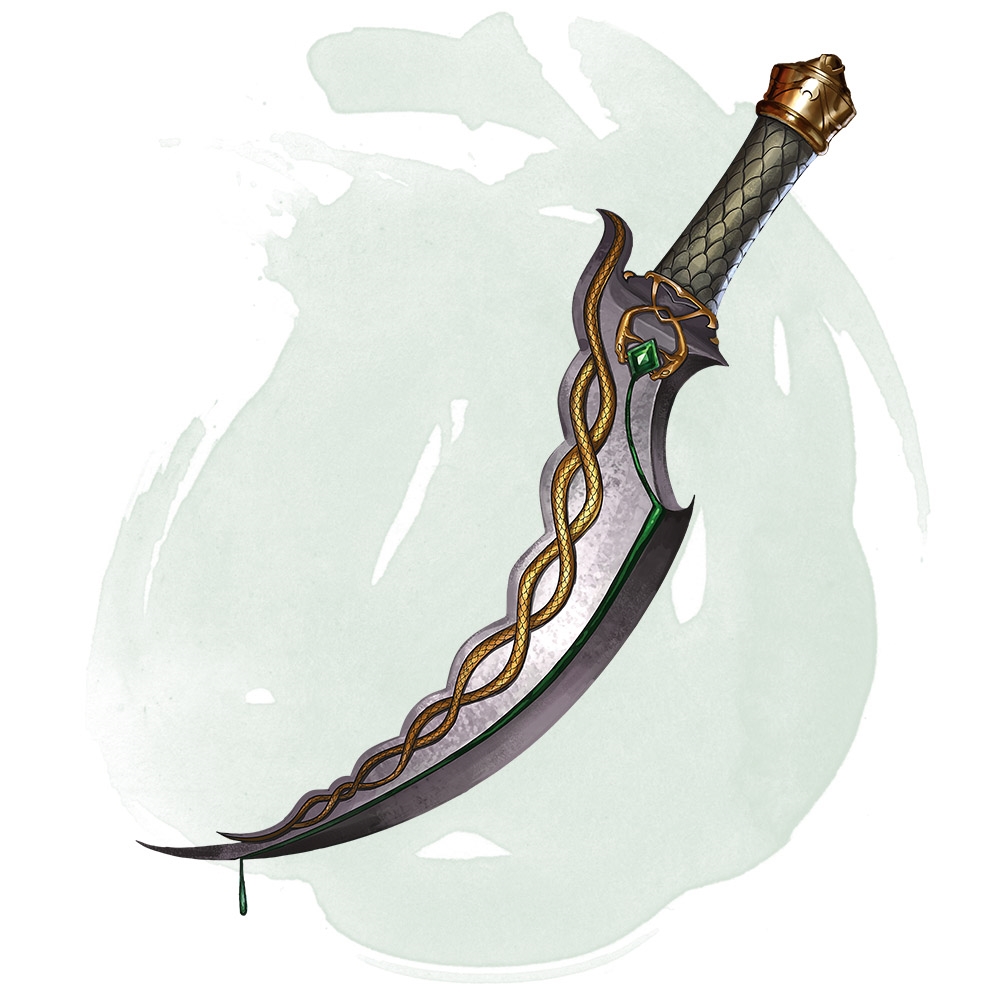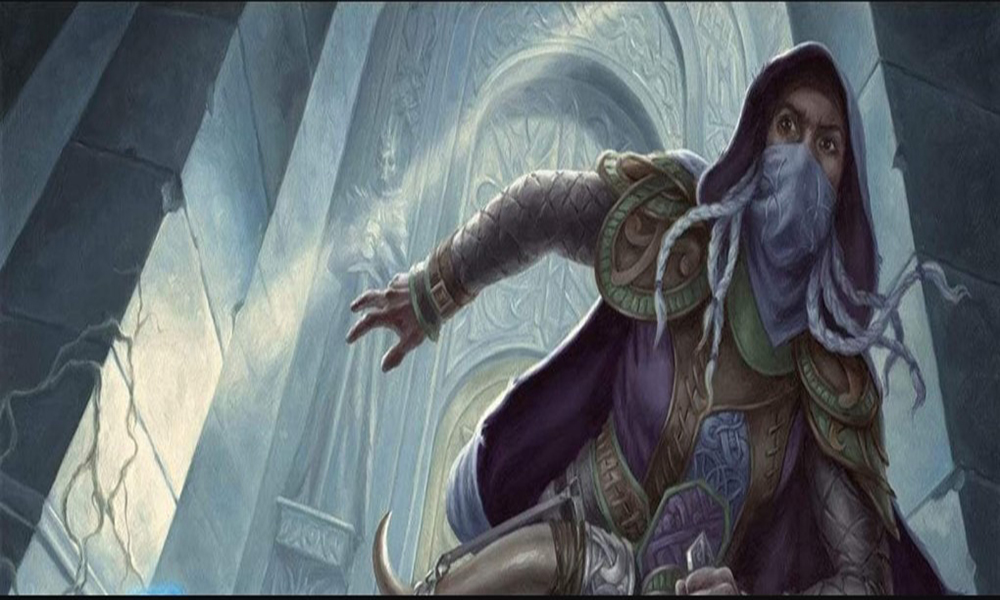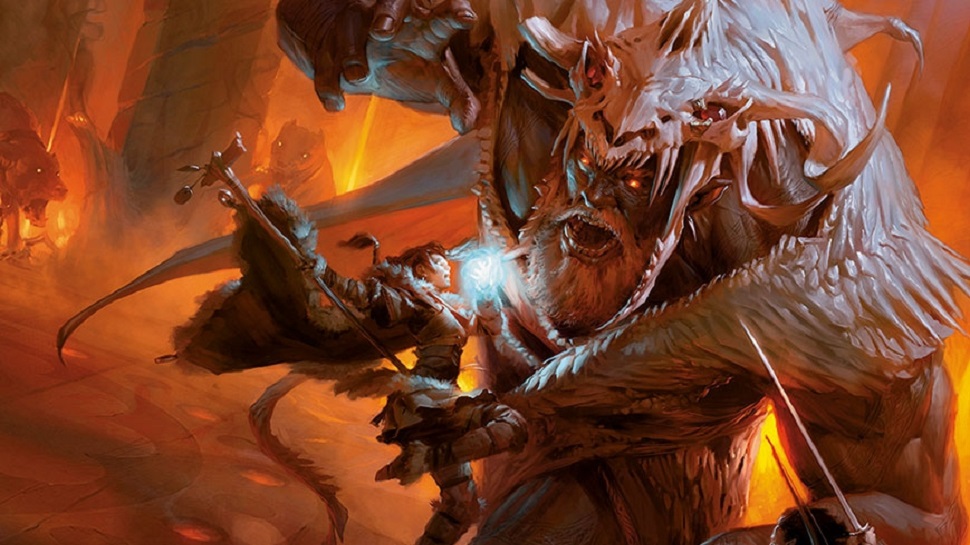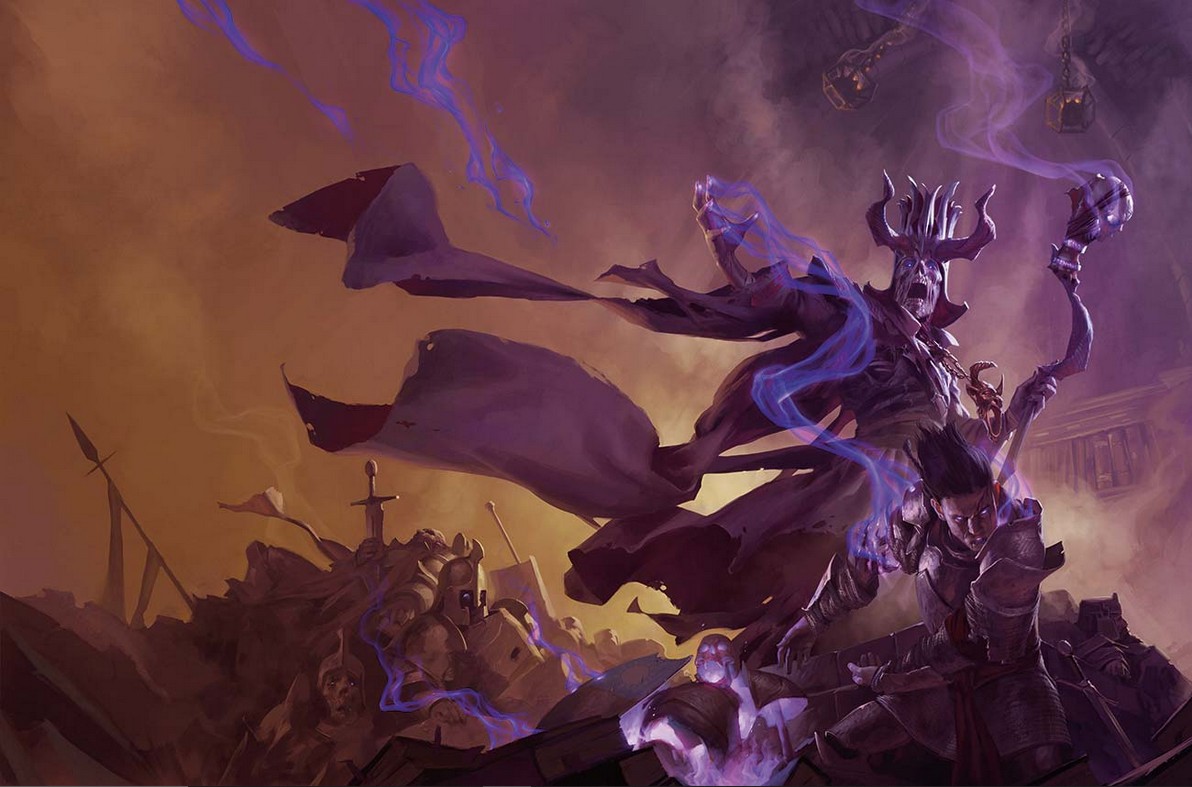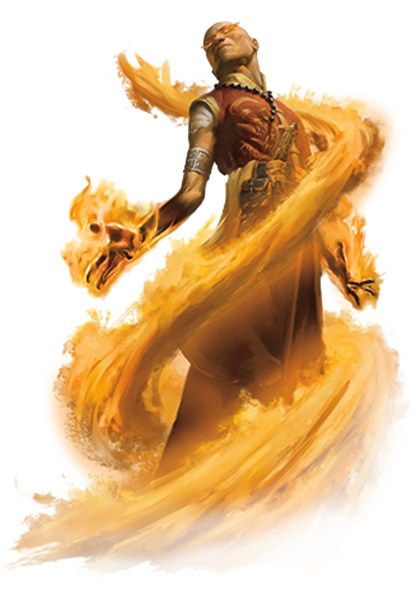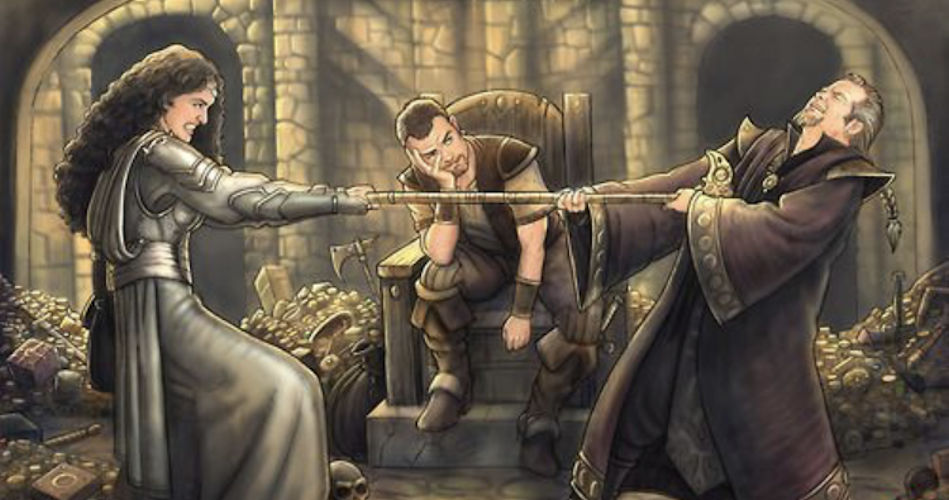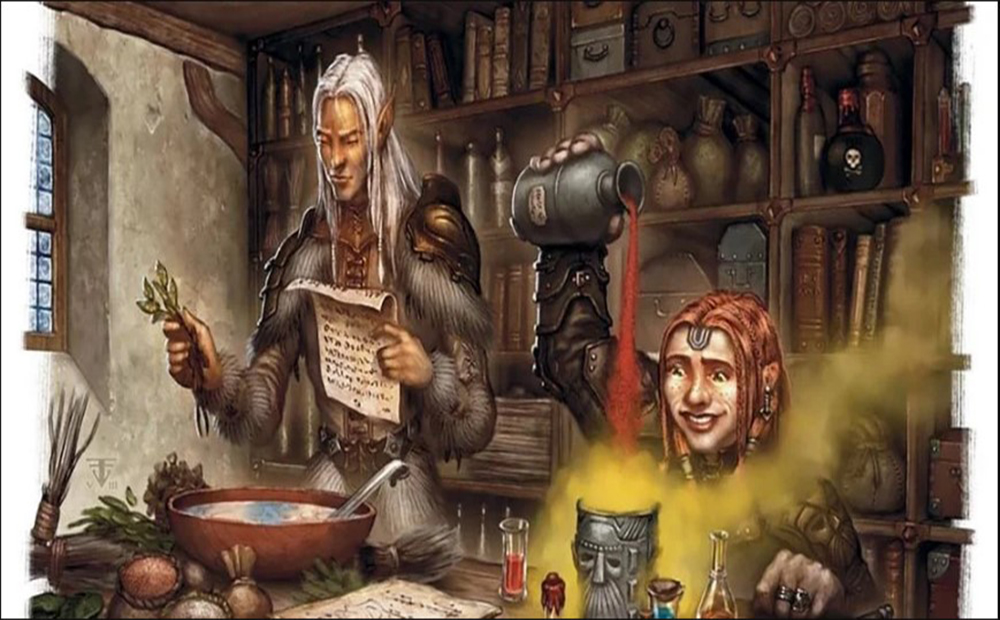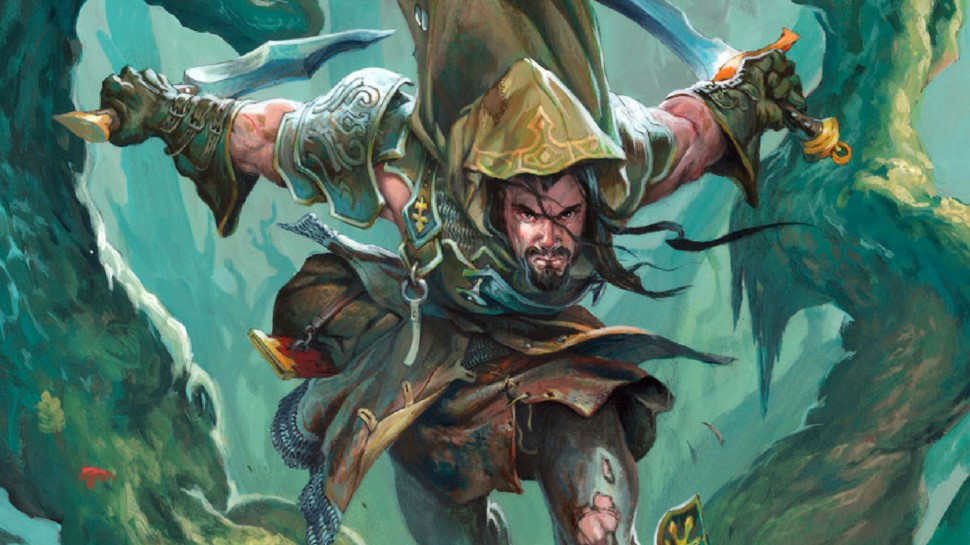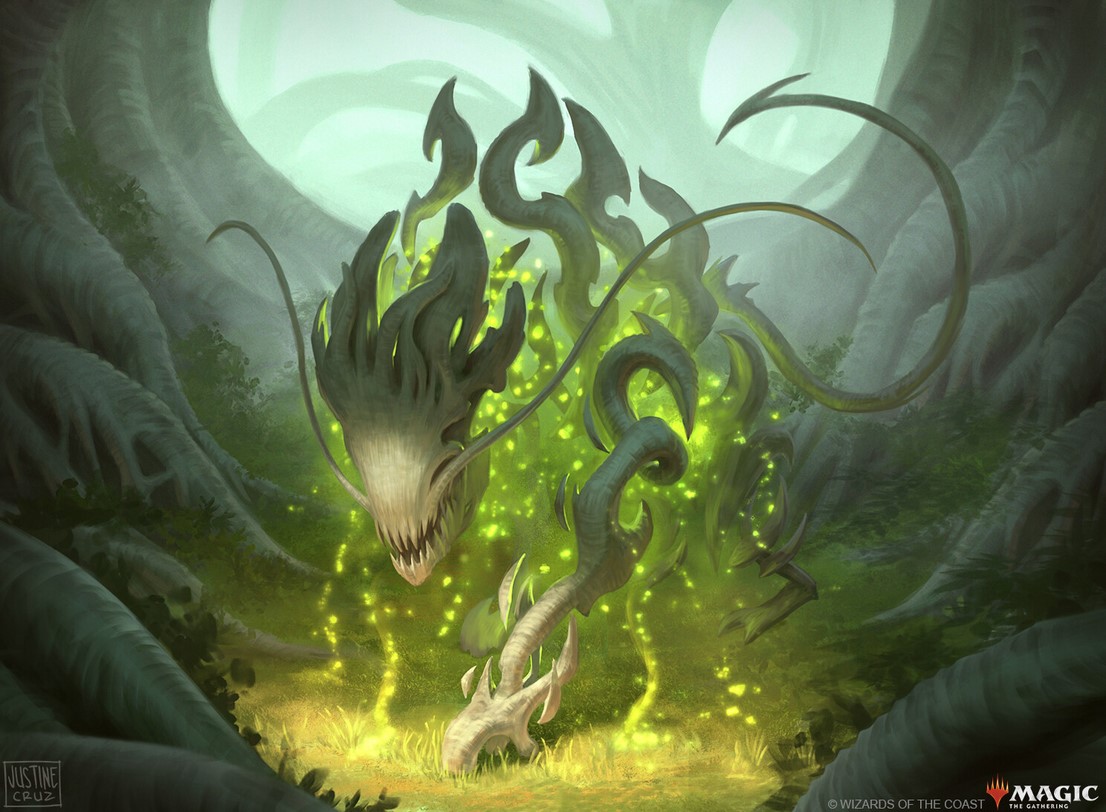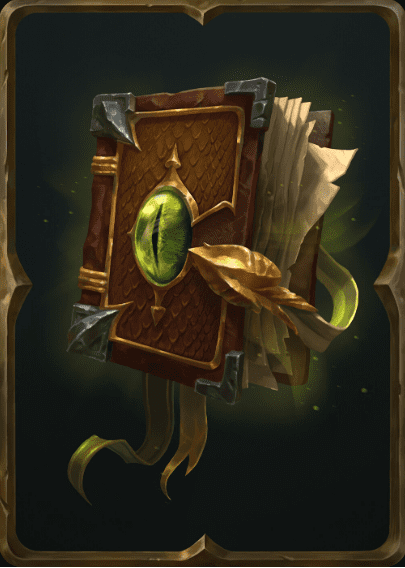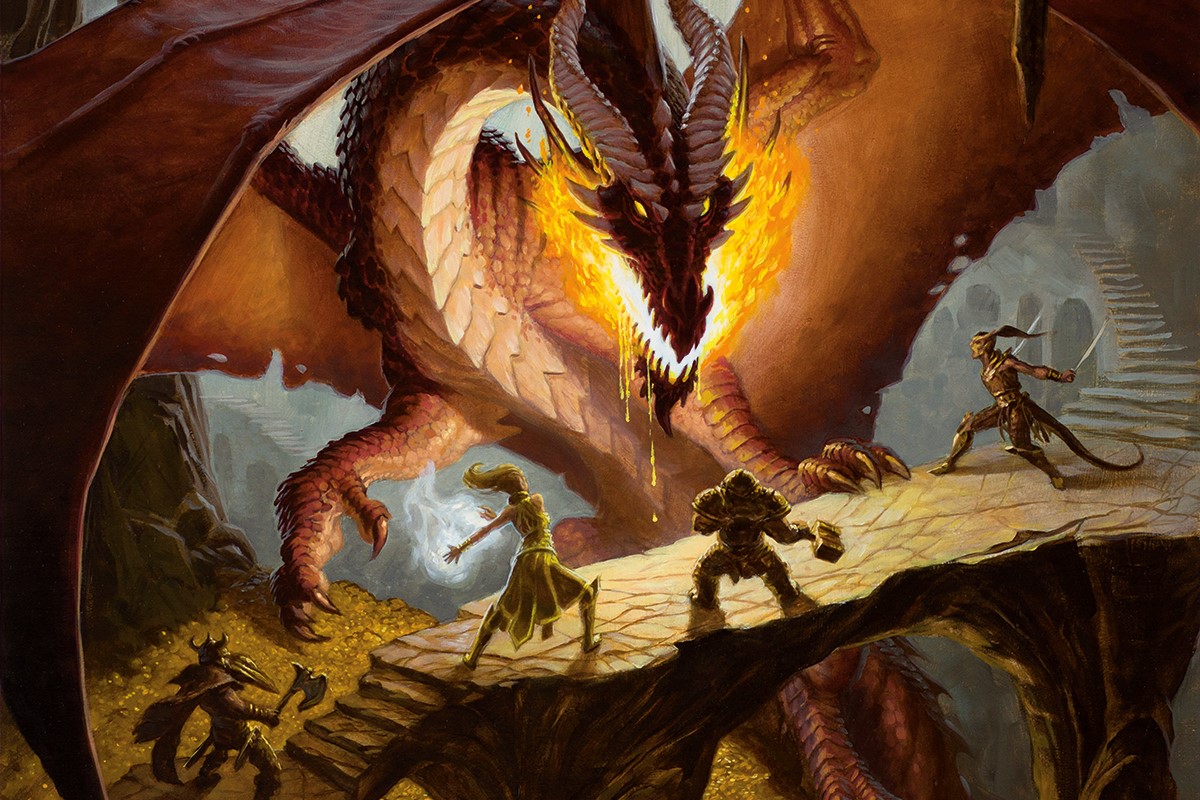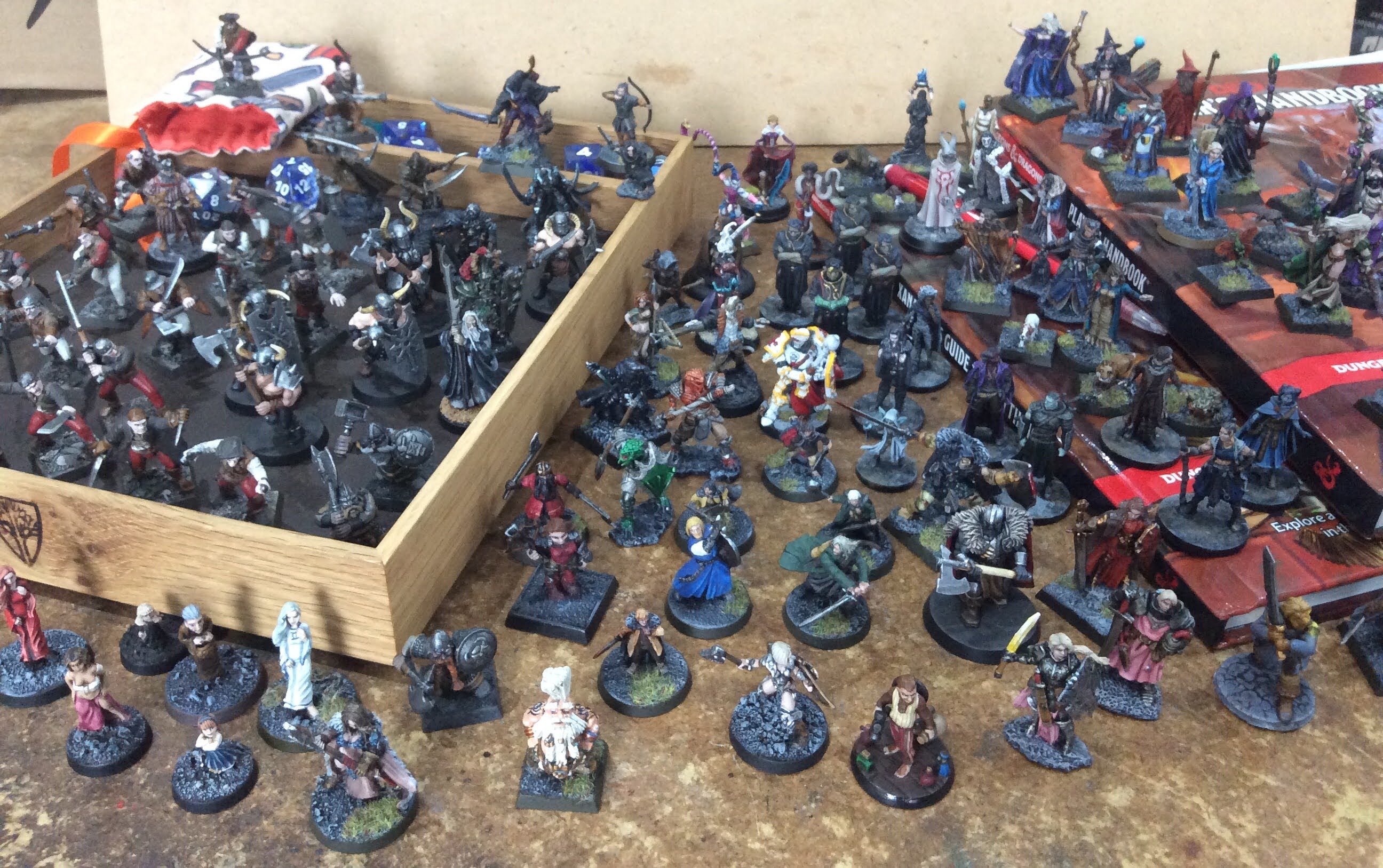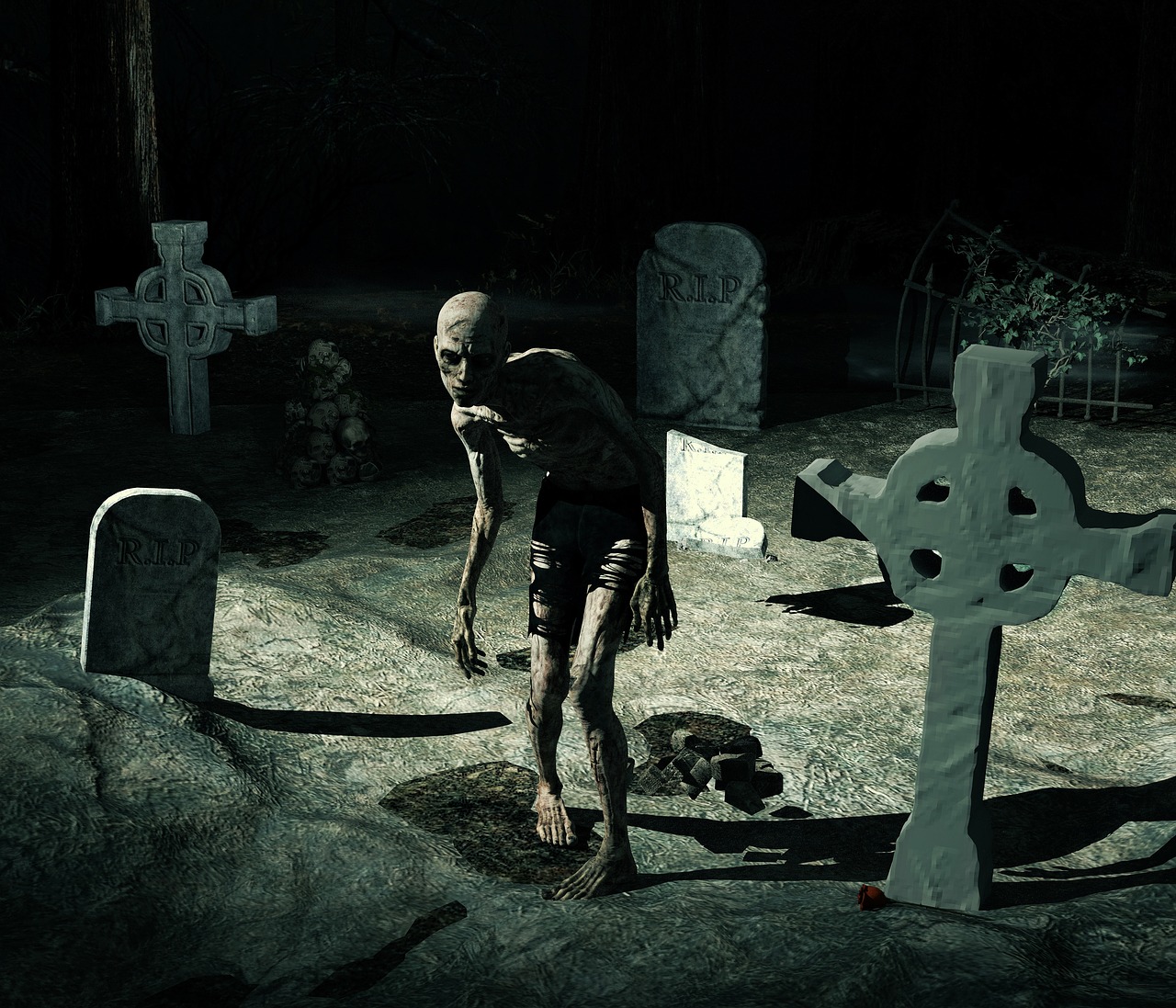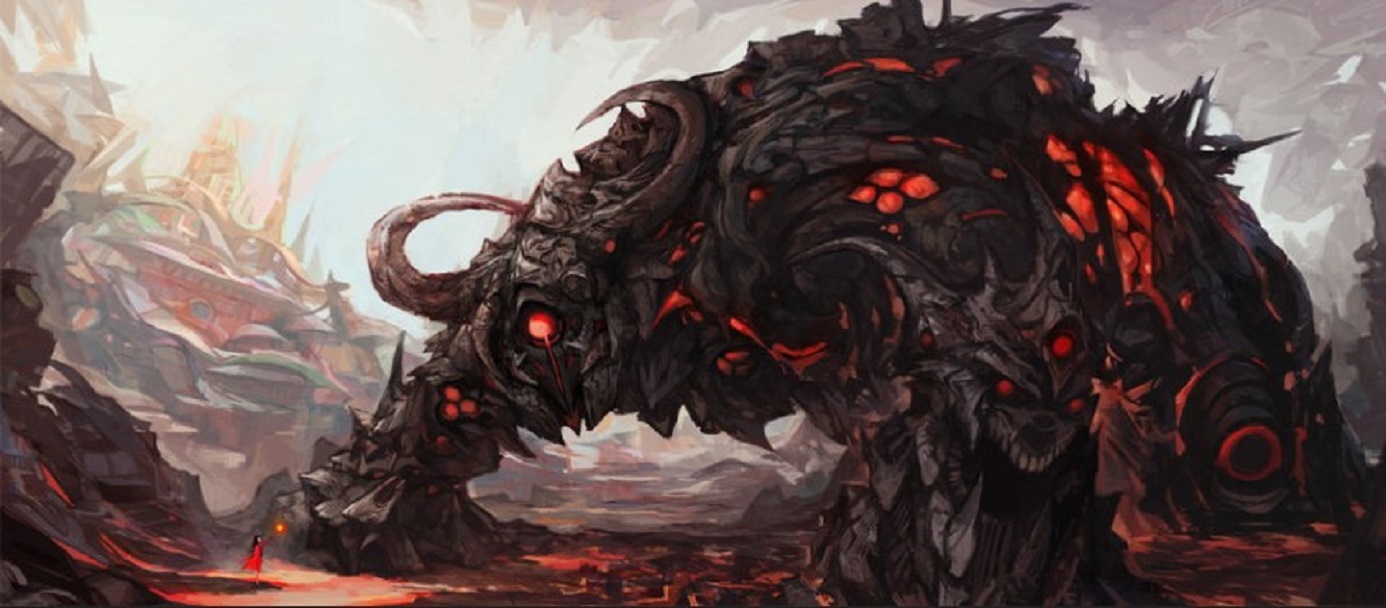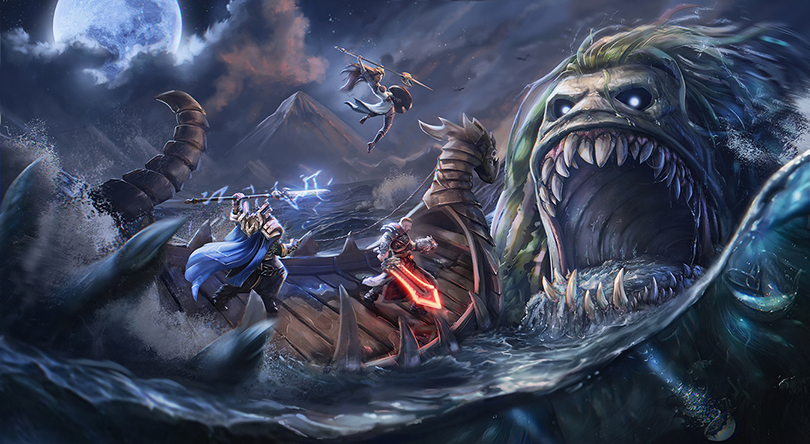
Breathing life into clay, wiping whole planets from existence, and manipulating the very fabric of reality at a whim, the deities of the multiverse are palpable forces that drive reality, and you, my most devout ready, are the instrument of their designs.
Whether you’re the zealot of an ancient god or a righteous crusader of father sun, your path as a cleric is a perilous one, for not even the gods can wholly shield you from what lies beyond the eye of mortal men, but worry not my friend, carry your holy symbol with pride for tonight, we talk clerics!
The Ethos of the pious
Flails and miracles. Dogma and hear. The embodiments of thoughts and prayers deserve much more than praise. The cleric is one of the most iconic classes in all of Dungeons & Dragons history, as well as ranking high in popularity between the players’ thanks to their versatility.
With their ability to fit every adventuring need, playing a cleric can be a daunting task. You have to adhere to your god’s decrees, weigh your necessities when picking spells and, on top of that, choose between one of the largest selections of subclasses in all of 5th edition.
Take a seat, be welcomed to the cult-I mean club, let us open the scriptures and see a few builds that make the most of the cleric’s wide potential.
Worry not, these aren’t meant to be followed by the letter, feel free to tweak and change as you see fit for your character. We’ll be using options from the Player’s Handbook (PHB), the Sword Coast Adventurer’s Guide (SCAG), Volo’s Guide to Monsters (VGtM), and Xanathar’s Guide to Everything (XGtE).
1. The Castigator

The Castigator, a battle-priest who channels arcane magic to punish the infidels
A devout follower of the goddess of magic, our cleric found salvation in the teachings of the scriptures and growth through the art of magic. When horrors plot to tarnish the magic they have sworn to protect, divine judgment descends upon them.
The Castigator is a very powerful build that focuses on the Arcana Domain from the Sword Coast Adventurer’s Guide. The Arcana Domain gives us the ability to cast some spells from the wizard class, bolstering our already powerful repertoire.
We’ll play around with the Crusher and Warcaster feats, so make sure your Dungeon Master allows them if you want to play the Castigator.
What the Castigator excels at
- More cantrips. The Arcana domain gives your cleric two cantrips from the wizard spell list which you can cast with your wisdom, giving you more tools to play with.
- Punishing sinners. We’ll pick the Booming Blade cantrip. This, combined with the Spiritual Weapon and Spirit Guardians spells lets you output a whole world of hurt.
- In the thick of it. Right in the vanguard is where the Castigator shines. This means your cleric will be the wall between the foes and the party, and with you at the front, victory is assured.
Build Details.
- Ability Scores. Using the standard array, we’ll get the following: 15 Wisdom, 14 Strength, 13 Dexterity, 12 Constitution, 10 Intelligence, 8 Charisma. We want to keep our Wisdom as high as possible.
- Race. Starting As a Dwarf and choosing the Hill Dwarf subrace will increase our Wisdom by 1 and our Constitution by 2, not only that, we’ll benefit from the Dwarven Toughness feature which will let our Castigator stay up fighting for longer.
- If your DM allows variant human, pick that instead, arranging your ability scores as follows: 15 Wisdom, 14 Constitution, 13 Strength, 12 Dexterity, 10 Intelligence, 8 Charisma; take Crusher for the free feat.
- Background. Choose a background that fits the backstory of your character. Acolyte or Sage is pretty fitting for our Castigator.
- Equipment. Since our Castigator will be up and personal most of the time, we recommend grabbing a shield, donning medium armor, and wielding the heaviest Warhammer you can find.
- Class. Start at level 1 in the cleric class and pick the Arcana domain. You now have the Detect Magic and Magic Missile spells constantly prepared; we recommend you pick Booming Blade as one of your cantrips from your Arcane Initiate feature.
- Every time you gain an Ability Score Increase, make sure to increase your Wisdom by 2 until you reach a score of 20. Afterward, consider increasing your Constitution score. If your game uses feats, take Crusher and War Caster if you had not already acquired one or the other.
- With the Crusher feat, if you hit an enemy with Booming Blade you can move it 5 feet away, meaning that, unless they have a greater range, they will take Booming Blade damage if they move anywhere.
- As you grow in power, your Castigator will unlock more powerful abilities:
- At level 6, whenever you heal a creature with a spell, you can dispel a spell afflicting that creature.
- Once you reach level 8, you can add your Wisdom to the damage of your cantrips, thus boosting the damage done by your Booming Blade.
- By reaching the pinnacle of your domain at level 17th, you can add powerful spells from the wizard spell list to your own and they are always prepared.
Spell Selection.
Spells are a central part of the cleric class. Since there are so many spells to choose from, we’ll only list those that we find pivotal to the Castigator build:
- Cleric Cantrips: Guidance.
- Wizard Cantrips: Booming Blade.
- 1st-level spells: Shield of Faith.
- 2nd-level spells: Spiritual Weapon.
- 3rd-level spells: Spirit Guardians.
2. The Storm Bringer.

The Storm Bringer, a thunderous devout from the god of lightning.
Once a sea raider, our cleric turned a new leaf when their longship was struck by lightning. So marvelous were they, that now they devote day and night to worship the great Lord of the Storm, marked since that fateful day.
The Storm Bringer is a synergetic cleric–sorcerer multiclass which plays around with high mobility and boisterous thunder damage. By combining the Tempest domain with Storm Sorcery from Xanathar's Guide to Everything, will give your cleric the ability to wear heavy armor and amplify thunder damage.
Since multiclassing is an optional rule in 5th edition, make sure your Dungeon Master allows it before playing a Storm Bringer.
What the Storm Bringer Excels at
- Great Defense. Being a Tempest cleric gives our Storm Bringer heavy armor proficiency. This means that you’ll have around 16 to 18 Armor Class (AC) depending on you using a shield.
- Battlefield Mobility. Taking 1 level in Storm Sorcerer gives us the ability to fly a little distance away without provoking opportunity attacks when we invoke our spells.
- More Cantrips. Once you’ve multi-classed at level 2, you’ll have a total of at least seven cantrips.
Build Details.
- Ability Scores. Using the standard array, we’ll get the following: 15 Strength, 14 Wisdom, 13 Charisma, 12 Constitution, 10 Dexterity, 8 Intelligence.
- Race. Firbolg is an excellent choice for our Storm Bringer. Their racial ability score bonus will bump both our Strength and Wisdom to 16!
- Background. There is no single best background, save for that which fits your character concept, however, Sailor and Adept are good choices.
- Equipment. Since the Storm Bringer gets heavy armor proficiency, start with chain mail and pick a weapon of your choosing.
- Class. Start at level 1 in the cleric class. We begin with cleric because it increases our survival chances with their higher Hit Die and better armor proficiency.
- Pick the Tempest domain, now the Fog Cloud and Thunderwave spells are always prepared for you, and, alas, you get heavy armor proficiency.
- At level 2, take your first level in sorcerer. Afterward, you’ll only be taking levels in the Cleric class; make sure to pick Booming Blade as one of your cantrips and the Shield spell.
- Every time you gain an Ability Score Increase, make sure to increase your Strength by 2 until you reach a score of 20. Afterward, consider increasing your Wisdom score. If your game uses feats, take War Caster if you had not already acquired one or the other.
- As you increase your cleric levels, you will gain the following abilities:
- At cleric level 2, our Storm Bringer can maximize their lightning or thunder damage instead of rolling.
- Once you reach cleric level 6, your lightning spells push creatures away.
- By cleric level 8, your weapon strikes are infused with extra thunder damage.
- You become blessed by the storms at level 17, attaining the power to fly as long as you aren’t in an enclosed space.
Spell Selection.
Like the Castigator, Storm Bringers have a similar melee-oriented focus on their spells. We will recommend those spells we consider a must-have to bring out the most of your Storm Bringer:
- Cleric Cantrips: Guidance.
- Sorcerer Cantrips: Booming Blade, Lightning Lure.
- 1st-level Cleric spells: Shield of Faith.
- 1st-level Sorcerer spells: Shield, Magic Missile.
3. The Farmer

The farmer, a gentle soul who cares for those around them.
With a joyous smile and a hearty laugh, our cleric traipses through town, delivering solace to the starving villagers one crop at a time. They will feed everyone they can, for there is no greater joy than serving and no greater serving than one done for another.
The Farmer is a fun build that focuses on keeping others alive, leaning heavily on the Life domain from the Player’s Handbook to bring out the most of their healing.
We’ll be making good use of the Magic Initiate build, so make sure to ask your Dungeon Master if they are allowed before building your Farmer.
What the Farmer Excels at
- Single Attribute Dependence. By picking the Magic Initiate feat as soon as possible, our Farmer should pick the Shillelagh and Good berry spells from the druid’s spell list. This spell choice means you’ll rely only on Wisdom if you wish to join the fray.
- A serving grace. Thanks to the Good berry spell, your party will never suffer the effects of starvation, as well as giving everyone a way of picking up a dying teammate.
- Never Worse for wear. The Life domain turns your cleric into the single, most capable healer in 5th edition. Never fear for the Farmer is here!
Build Details.
- Ability Scores. As usual, we’ll use the standard array for the following: 15 Wisdom, 14 Constitution, 13 Charisma, 12 Dexterity, 10 Strength, 8 Intelligence.
- Race. We’ll go for Dwarf, specifically Hill Dwarf. This choice will raise our Wisdom and Constitution scores to 16 each as well as give us 1 extra Hit Point every time we level up.
- If your DM lets you play a Variant Human, pick that instead with the following distribution: 15 Wisdom, 14 Constitution, 13 Dexterity, 12 Charisma, 10 Strength, 8 Intelligence; Bump your Wisdom and Dexterity and pick Magic Initiate for the free feat.
- Background. Any background which satisfies your roleplaying needs will work, however, Folk Hero and Adept fit the Farmer very well.
- Equipment. Since your Farmer will keep everyone alive, they’ll need to be well protected. Don the best medium armor you can find and keep your shield up!
- Class. Start at level 1 in the cleric class. For this build we recommend you stay as a cleric all the way to level 20.
- Pick the Life domain. Not only are the Bless and Cure Wounds spells always prepared for you, but your healing spells also heal additional hit points equal to 2 + the spell’s level.
- Every time you gain an Ability Score Increase, make sure to increase your Strength by 2 until you reach a score of 20. Afterward, consider increasing your Constitution score. If your game uses feats, take Magic Initiate if you haven’t already.
- Thanks to the Magic Initiate feat, you can use Shillelagh to partake in melee combat with your Wisdom for both attack and damage! Not only that, every single one of your Good berries heals for 4 Hit Points instead of 1.
- If that is not enough, as you gain more levels your Farmer will gain the following benefits:
- At level 2, you’ll gain a pool of Hit Points equal to five times your cleric level which you can, as an action, distribute among allies 30 feet from you!
- Staying alive is just as important as keeping others alive; Beginning at level 6, whenever you heal another creature, you gain some healing back.
- Like most domains, once you become level 8, your weapon strikes are infused with radiant damage.
- After overcoming the trials and tribulations which lead to level 17th, you heal the highest amount possible with your healing spells.
Spell Selection.
The cleric’s spell list is filled to the brink with useful, powerful spells. Since the Farmer focuses on keeping everyone alive, any spell which offers healing will be a safe choice.
What’s important to remember is that this build works well with the Shillelagh and Good berry spells, obtained through the Magic Initiate feat.
4. The Dawnbreak.

The dawnbreak, a divine herald who smites their foes with holy radiance. Image Credit: Dan Scott.
Believed to be the descendant of a sun deity, our cleric channels the raw divinity within their blood to uphold the ideals of father Sun. They wander the land projecting fraternal incandescence, searing those that mean foul harm.
This build plays with the trope of a flame priest, we’ll focus on damaging spells and crowd control. Who says faith can’t destroy whole armies?
Going Light domain gives our Dawnbreak access to some very powerful spells, and, if your Dungeon Master allows feats, we can bolster that damage even further.
What the Dawnbreak Excels at
- Powerful Area of Effects. Most of the cleric’s big, damaging spells are fairly high level, however, the Light domain gives you access to amazing damaging spells from the get-go.
- Greater Versatility. This build sacrifices none of the cleric’s healing and supporting abilities, but instead becomes even more flexible with the new spells at your disposal.
- Verticality. Starting at level 3, for 1 minute, our Dawnbreak can soar up to the skies and rain fire upon their foes.
Build Details.
- Ability Scores. Picking the standard array, we’ll get the following: 15 Wisdom, 14 Constitution, 13 Dexterity, 12 Strength, 10 Intelligence, 8 Charisma.
- Race. For this build we’ll start as Aasimar, picking the Protector subrace. Their ability score bonus will increase our Wisdom by 1 and Charisma by 2; most importantly, at level 3, we’ll gain access to the Radiant Soul feature.
- Background. Any background which you are comfortable with for your character idea will work, however, Adept fits the Dawnbreak nicely.
- Equipment. Since this build focuses on ranged spells, you are likely to be targeted by your enemies early on, so grabbing a decent medium armor and a sturdy shield is recommended.
- Class. We’ll pick cleric from level 1 and upwards. Our Dawnbreak devotes itself to the calling of our Sun lord.
- Pick the Light domain, this will give your cleric access to the burning hands and Faerie Fire spells, the latter being one of the best crowd control spells in 5th edition. The Warding Flare feature, which imposes disadvantage on an attack against you is nothing to scoff at either.
- At level 3, Protector Aasimars get the Radiant Soul feature. What this means is that now, for 1 minute, your Dawnbreak can sprout angelic wings and fly around the battlefield, dealing additional radiant damage equal to their level, yes, including to spells.
- Every time you gain an Ability Score Increase, make sure to increase your Wisdom by 2 until you reach a score of 20. Afterward, consider increasing your Constitution score. If your game uses feats, take Elemental Adept (Fire) if you had not already acquired it.
- Once you become level 8, your Dawnbreak will gain the Potent cantrips feature, which combined with the Protector Aasimar’s Radiant soul, can turn your cantrips into deadly tools.
Spell Selection
For the most part, your Dawnbreak’s domain spells will serve you well throughout most of your adventures. We recommend picking spells that pin down your opponents to make them more susceptible to your spells. Here are a few recommended spells that complement the Dawnbreak for the first and second tiers of gaming.
- Cleric Cantrips: Guidance, Sacred Flame, Word of Radiance.
- 1st-Level Spells: Bless, Guiding Bolt, Shield of Faith.
- 2nd-Level Spells: Blindness/Deafness, Hold Person, Spiritual Weapon.
- 3rd-Level Spells: Spirit Guardians.
5. The Twilight Apostle

The Twilight Apostle, an enigmatic cleric who worships the void between the stars.
Carrying the word of a long-forgotten god from beyond the veil of night, our cleric waltz into the tavern carrying a mantle of dreams and shade within.
With a deceptively powerful kit, we start our build by choosing the Twilight domain, a cleric domain from Tasha's Cauldron of Everything. The Twilight domain gives our cleric one of the best support abilities in 5th edition as well as a boost to their martial capabilities.
Covering your allies with a mantle of twilight protection that doesn’t take your concentration, while you cast spells or wade into the melee is just the tip of the iceberg of what you’ll be capable of.
What The Twilight Apostle Excels At.
- Excellent AC. The Twilight domain gives our cleric heavy armor and martial weapons proficiencies. With this, our Twilight Apostle will have about 16 to 18 Armor Class (AC) depending on whether or not you wield a shield.
- Amazing Support. Your Twilight Sanctuary feature lets your Twilight Apostle create a 30-foot radius sphere of dim light which gives incredible benefits, such as granting temporary Hit Points or ending one harmful charm or fear effect.
- Increased Mobility. At middle levels, our Twilight Apostle gains the ability to fly as long as they are in dim light or darkness.
Build Details.
- Ability Scores. Using the standard array, we’ll strive for: 15 Wisdom, 14 Constitution, 13 Strength, 12 Charisma, 10 Dexterity, 8 Intelligence. Wisdom is our most important ability.
- Race. For this build, any race which increases your Wisdom stat will work. We recommend taking Hill Dwarf for their racial ability score bonus and extra Hit Points.
- Background. Choose backgrounds that fit with your concept, or which grant the skills proficiencies you want. Adept is a safe choice.
- Equipment. We recommend striding into battle with a set of heavy armor to make the most out of your cleric’s proficiency as well as a reliable shield, let's bump that AC up!
- Class. We’ll take level 1 and forwards in the cleric class. Our devotion knows no bounds.
- Pick the Twilight domain, this grants our cleric the Faerie Fire and Sleep spells which we’ll always have prepared. Your Twilight apostle also gains an improved Darkvision with a range of 300 feet, useful for those perilous delves into underground ruins.
- At level 2, our Channel Divinity lets us invoke a 30-foot radius sphere, which does not take your concentration, that lets creatures who start their turn within it either receive temporary Hit Points that scale with your level or free themselves from a charm or fear effect.
- Every time you gain an Ability Score Increase, make sure to increase your Wisdom by 2 until you reach a score of 20. Afterward, consider increasing your Constitution score. If your game uses feats, take War Caster or Resilient (Constitution) if you had not already taken one or the other.
- As our Twilight Apostle’s devotion grows stronger, so does the ability you gain, some of which are:
- While in dim light or darkness, our cleric can gain a flying speed for 1 minute as a bonus action which can be used more than once.
- By the will of our deity, your weapons strike become infused with the embrace of twilight.
- Now a lord of twilight, you and your allies benefit from half cover while within its range.
Spell Selection
Spellcasting is the bread and butter of all spellcasting classes, and for a build that excels at supporting others like our Twilight Apostle, it is important to choose spells that synergize with our party composition. We will list our recommended spells that fit our Twilight Apostle.
- Cleric cantrips: guidance, spare the dying, Toll the dead.
- Cleric 1st-level spells: healing word, bless, sanctuary, shield of faith
- Cleric 2nd-level spells: aid, spiritual weapon, locate object.
- Cleric 3rd-level spells: animate dead, dispel magic, revivify, spirit guardians.
- Cleric 4th-level spells: banishment, death ward, freedom of movement, guardian of faith.
- Cleric 5th-level spells: Greater restoration, Raise dead, Summon Celestial.
- Cleric 6th-Level: heal, heroes’ feast, planar ally.
- Cleric 7th-Level: conjure celestial, divine word.
- Cleric 8th-Level: antimagic field, holy aura.
- Cleric 9th-Level: mass heal.
Honorable Mentions
A myriad of gods populates the multiverse, their devout followers varied and diverse like the deities they worship. With such versatility, it’s impossible to list all the fun ways in which one could channel the power of the gods into the world.
If you wish to incarnate the many ideologies of the pantheon, we recommend you also consider trying out:
- The Forge Domain from Xanathar’s Guide to Everything allows you to achieve one of the highest possible AC’s by empowering the masterworks which you craft.
- The Grave Domain, also from Xanathar’s Guide to Everything, watches over the natural cycle of life and death. When their time is not nigh, they excel at keeping their allies from the grip of eternal rest.
- The War Domain from the Player’s Handbook is a classic; don the trappings of a crusader ready to wage bloody carnage against all foes.
The Temple’s Holy Relics
Like most adventurers, clerics employ a variety of treasures, weapons and armors to bring the word of their gods to the most remote places.
Say your prayers, don your trappings and receive your blessings, for when the temple’s reliquary opens, we’ll share some of the items cleric players could crusade for.
- Necklace of Prayer beads: A cleric attuned to this necklace gets several charges and a series of useful spells that, guess what? Are cast as a bonus action!
- Winged Boots: Unless you prepare ranged spells, most clerics struggle against foes with verticality. Suffer no more, for these boots grant you a flying speed to catch those that dare run.
- Staff of Healing: While clerics are much more than healers, they certainly excel at it. With a Staff of healing, you can free up spaces from your prepared spells and still offer much needed respite to wounded allies.
If you enjoy reading about Dungeons & Dragons as well as RPG content, you might like the following:
[Top 10] D&D: Most Popular Races

